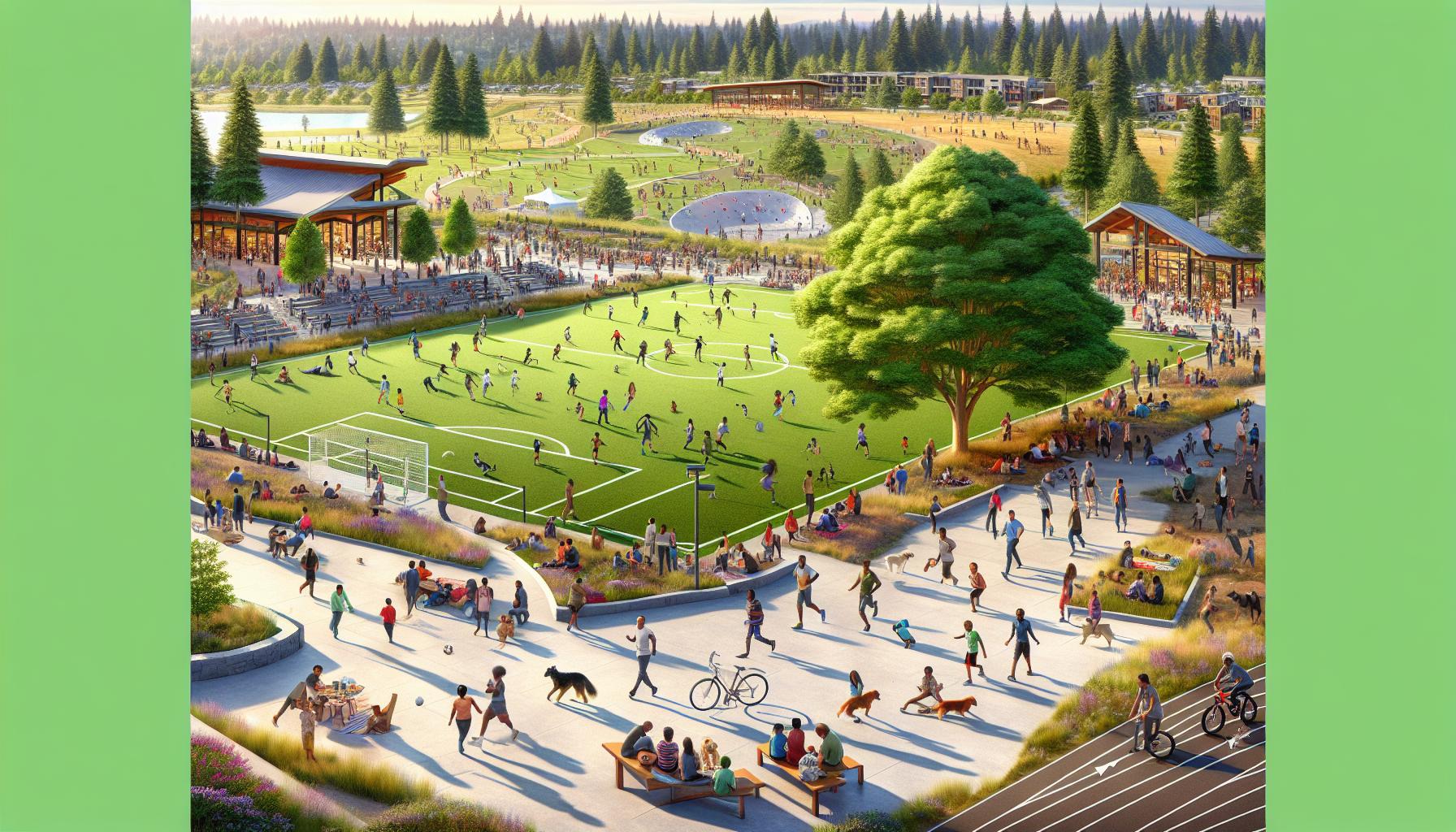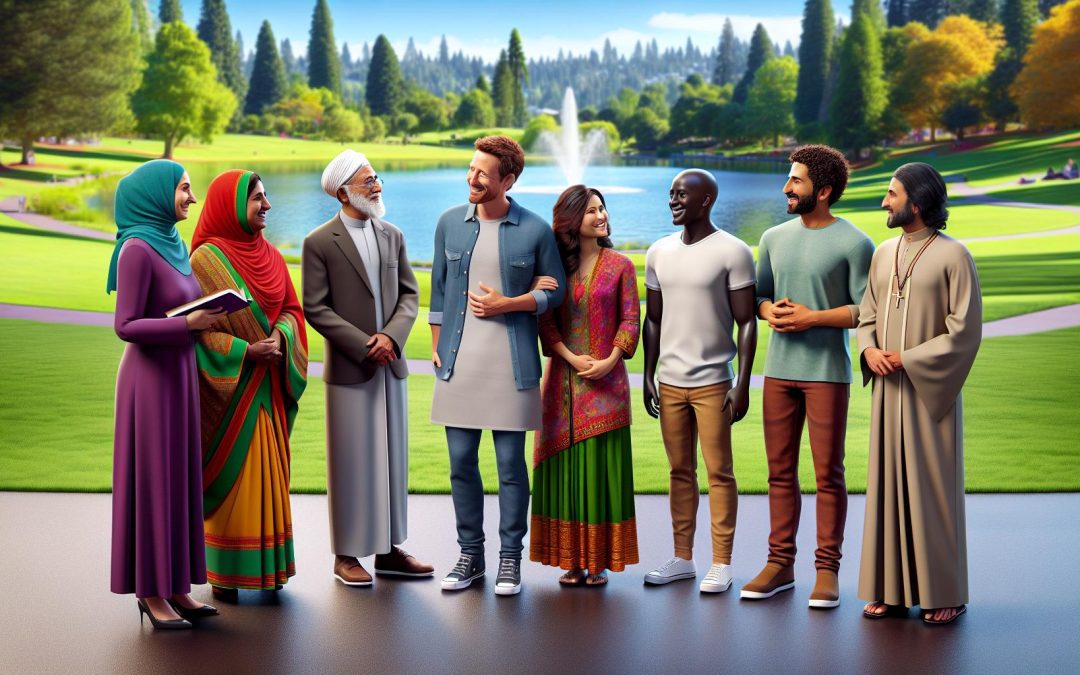When you think of Redmond, Washington, you might picture tech giants and bustling innovation. But nestled within this vibrant city lies a rich tapestry of green spaces that offer a serene escape from the digital hustle. I’ve always found it fascinating how Redmond’s parks and recreation areas have evolved over the years, transforming from humble beginnings into the lush, well-maintained sanctuaries we enjoy today.
From the expansive Marymoor Park, with its off-leash dog areas and concert venues, to the hidden gems like Idylwood Beach Park, Redmond’s commitment to preserving nature is evident. These green spaces not only provide a haven for residents but also tell a story of a community that values its natural heritage. Join me as we explore the history and charm of Redmond’s parks and recreation, and discover the green heart of this tech-savvy city.
Overview of Redmond’s Parks and Recreation
Redmond’s parks and recreation spaces offer a unique blend of natural beauty and recreational opportunities. With over 23 parks, including prominent ones like Marymoor Park and Idylwood Beach Park, the city has become a sanctuary for outdoor enthusiasts.
Marymoor Park
Marymoor Park is the crown jewel of Redmond’s parks. Spanning 640 acres, it hosts diverse activities and events. Visitors can enjoy an off-leash dog area, a climbing wall, and various sports fields. Notably, the summer concert series attracts numerous attendees, reflecting the community’s vibrant cultural scene.
Idylwood Beach Park
Idylwood Beach Park offers a serene lakeside experience. Positioned along the shores of Lake Sammamish, it features swimming areas, picnic spots, and a playground. Families often frequent this park, making it a beloved local attraction.
Other Notable Parks
- Anderson Park: Known for its historical cabins and lush greenery, Anderson Park is a charming downtown retreat.
- Farrel-McWhirter Park: This park is a gem for animal lovers, offering farm animals and equestrian trails.
- Grass Lawn Park: Popular for its tennis courts and splash pad, Grass Lawn Park is perfect for family outings.
Recreational Activities
The city of Redmond has a robust recreational program. Activities range from youth sports leagues to adult fitness classes. Seasonal events, like the Redmond Lights and Derby Days, keep the community engaged year-round.
Preservation Efforts
Redmond places a high value on preserving its green spaces. Ongoing initiatives focus on habitat restoration, sustainability, and community involvement. By organizing volunteer programs and educational workshops, the city ensures that its parks remain pristine and accessible.
Future Plans
Looking ahead, Redmond plans to continue investing in its parks. Upcoming projects aim to expand existing facilities and introduce new amenities. The city also prioritizes accessibility, ensuring that all residents can enjoy these green spaces.
Early Development of Green Spaces
Redmond’s commitment to cultivating green spaces began early in its history, driven by a sense of community and appreciation for nature.
Pioneering Efforts
In the early 1900s, Redmond residents recognized the value of preserving natural areas. Efforts to create accessible green spaces gained momentum as the population grew. Visionary leaders advocated for parks, emphasizing the benefits of outdoor activities and communal gathering spots. Donations of land for public use played a pivotal role. For instance, in 1922, the community rallied to purchase land for Anderson Park, one of the city’s first public parks.
Initiatives focused on maintaining the natural beauty of the environment while making it usable for recreation. Community-driven projects ensured that these green spaces met the needs of residents. These pioneering efforts laid the foundation for a network of parks that would grow to become a defining feature of Redmond.
First Community Parks
Redmond’s first community parks embodied the spirit of early green space development. Anderson Park established in 1929, is notable as a pioneer. This park featured picnic tables and play areas, becoming a central hub for families. The city acquired additional parcels of land, aiming to create more recreational spaces.
Another early example is Grass Lawn Park, developed in the mid-20th century. This park included sports fields and open play areas, catering to the diverse interests of the community. These early parks provided a template for future developments, blending natural preservation with recreational use.
By investing in these initial green spaces, Redmond showed a long-term commitment to enhancing residents’ quality of life, ensuring that nature remained an integral part of urban growth.
Expansion and Modernization
By the late 20th century, Redmond embarked on an expansion and modernization journey for its parks and recreational facilities.
Key Projects in the 20th Century
Several key projects during the 20th century shaped Redmond’s parks system. Marymoor Park’s expansion stands out. Acquired by King County in 1963, the park transformed into a multi-use recreational area. By the 1970s, amenities like athletic fields, a velodrome, and the off-leash dog area were added.
In 1969, Idylwood Beach Park opened, becoming a go-to spot for lakeside activities. With its swimming areas, playgrounds, and picnic spots, it quickly gained popularity among families. The addition of Grass Lawn Park in 1969 provided much-needed space for sports enthusiasts, featuring tennis courts, soccer fields, and baseball diamonds.
Various smaller parks emerged as well. Anderson Park, one of Redmond’s oldest, received upgrades. These projects aimed to enhance green space accessibility and provide diverse recreational opportunities.
Technological Innovations
Modernization of Redmond’s parks included technological innovations to improve user experience. Anderson Park installed solar-powered lighting, enhancing safety while promoting sustainability. Marymoor Park introduced a digital reservation system in the 2000s, making it easier for residents to book facilities.
Smart irrigation systems were deployed in many parks to conserve water. These systems adjust watering schedules based on weather conditions. The city also leveraged mobile apps to provide park information, trail maps, and event schedules to residents.
Wi-Fi hotspots appeared in major parks, enabling visitors to stay connected while enjoying nature. Interactive kiosks in parks provided information on park history, flora, and fauna, enhancing the educational experience. By integrating technology, Redmond ensured its parks remained relevant and user-friendly in the digital age.
Notable Parks in Redmond
Redmond offers a diverse range of parks that cater to various recreational activities. Some of these parks stand out for their unique features and historical significance.
Marymoor Park
Marymoor Park, Redmond’s largest park, spans 640 acres and serves as a multifaceted recreational hub. Located along the Sammamish River, it offers something for everyone. Visitors enjoy the off-leash dog area where pets can run freely, while the summer concert series attracts music lovers to its expansive lawn. Sport enthusiasts can utilize the soccer fields and rock-climbing wall. Naturalists and bird watchers frequent the regional trails and habitats. Marymoor’s Velodrome provides a unique space for cycling enthusiasts. The park also features an R/C airplane field that draws both hobbyists and spectators. With its diverse offerings, Marymoor Park ensures that all visitors find something engaging to do.
Anderson Park
Anderson Park holds the distinction of being Redmond’s oldest park, established in 1922. Nestled in downtown Redmond, this 2.8-acre park offers a tranquil respite from the urban hustle. The log cabin-style shelters reflect the area’s historical roots and are popular venues for community events and private gatherings. Families and individuals find the park’s rustic charm and playgrounds appealing. The lush lawns and towering trees provide ideal picnic spots, while the walking paths offer gentle exercise opportunities. Anderson Park’s historic elements and serene environment make it a cherished landmark in Redmond.
Community Engagement and Activities
Redmond’s parks and recreation programs offer ample opportunities for residents to connect, play, and contribute to the community.
Recreational Programs
Redmond’s recreational offerings cater to a wide array of interests. Youth sports leagues, such as soccer, basketball, and baseball, are popular and provide skill-building and teamwork experiences. Seasonal events, including summer camps and holiday-themed activities, bring families together and create lasting memories.
Fitness enthusiasts flock to the city’s organized exercise classes, ranging from yoga to high-intensity interval training (HIIT). The Redmond Community Center hosts these classes and offers accessible options for all age groups. Outdoor enthusiasts enjoy guided nature walks and bird-watching events organized in collaboration with local wildlife organizations.
For culture seekers, the city sponsors art workshops, theater performances, and music classes. These programs enrich the community’s cultural tapestry and foster creativity. Throughout the year, events like Movies in the Park and the Redmond Lights festival highlight the city’s vibrant recreational calendar. Each program reflects Redmond’s commitment to diverse, accessible, and enriching community experiences.
Volunteer Contributions
Volunteers play a crucial role in maintaining and enhancing Redmond’s green spaces. Community members participate in diverse activities, from habitat restoration to event organization. The city’s Adopt-a-Park program connects residents with specific parks, encouraging local stewardship and fostering a sense of ownership.
Annual events like Green Redmond Day mobilize hundreds of volunteers for large-scale tree planting, invasive species removal, and trail maintenance. These efforts contribute significantly to the health and beauty of the parks. Scout troops, school groups, and corporate teams also join, making it a collective community endeavor.
Redmond’s volunteer recognition programs celebrate outstanding contributions, fostering a culture of appreciation and inspiring continued involvement. By engaging a broad segment of the population, from youth to seniors, the city ensures that its parks remain beautiful and sustainable. Each volunteer’s effort, no matter how small, plays a part in keeping Redmond’s green spaces flourishing.
Future of Green Spaces in Redmond
Redmond’s future looks green and vibrant as investments in parks and sustainability initiatives take center stage.
Upcoming Projects
Redmond’s city planners focus on enhancing and creating green spaces. The Redmond Central Park project, scheduled for completion by 2025, aims to create a dynamic urban park for all residents. Features include playgrounds, walking trails, an amphitheater, and interactive water features. This park will be a central hub for community events and outdoor activities.
The Redmond Community Garden Network is expanding, with three new garden sites opening in the next two years. This expansion will increase residents’ access to community gardening plots, promoting local food production and community engagement.
Hartman Park’s renovation plan includes installing new sports fields, a modern playground, picnic areas, and improved accessibility features by 2024. Focused on inclusivity, the design ensures that everyone, regardless of ability, can enjoy the park’s amenities.
Sustainability Initiatives
Sustainability sits at the heart of Redmond’s green space strategy. The Green Infrastructure Program involves installing rain gardens and bio-swales to manage stormwater naturally and sustainably. These features reduce flooding risks and enhance local biodiversity.
Redmond’s Parks and Recreation Department prioritizes eco-friendly practices. The Solar Energy Initiative plans to install solar panels in parks like Grass Lawn Park and Farrel-McWhirter Park. These panels will power lighting, reduce energy costs, and lower the city’s carbon footprint.
Tree planting campaigns are ongoing, with a goal to plant 10,000 trees by 2030. Partnering with local environmental groups, the city encourages residents to participate in planting events to foster community involvement and environmental stewardship.
The Sustainable Park Design Guidelines ensure new parks follow principles of sustainability. By using recycled materials, prioritizing native plant species, and implementing energy-efficient designs, Redmond’s parks will continue to be green and eco-friendly for future generations.
Conclusion
I’ve always been amazed at how Redmond balances its tech-savvy reputation with such an abundance of green spaces. The city’s parks and recreational areas offer a perfect escape from the hustle and bustle, providing a serene environment for everyone to enjoy.
From the expansive Marymoor Park to the tranquil Idylwood Beach Park, there’s something for everyone here. Redmond’s commitment to preserving nature, coupled with its innovative approach to park management, ensures these spaces remain vibrant and accessible for all.
As we look to the future, it’s exciting to see how Redmond plans to expand and enhance its parks. The city’s dedication to sustainability and community involvement guarantees that these green spaces will continue to thrive, offering a haven for generations to come.





0 Comments